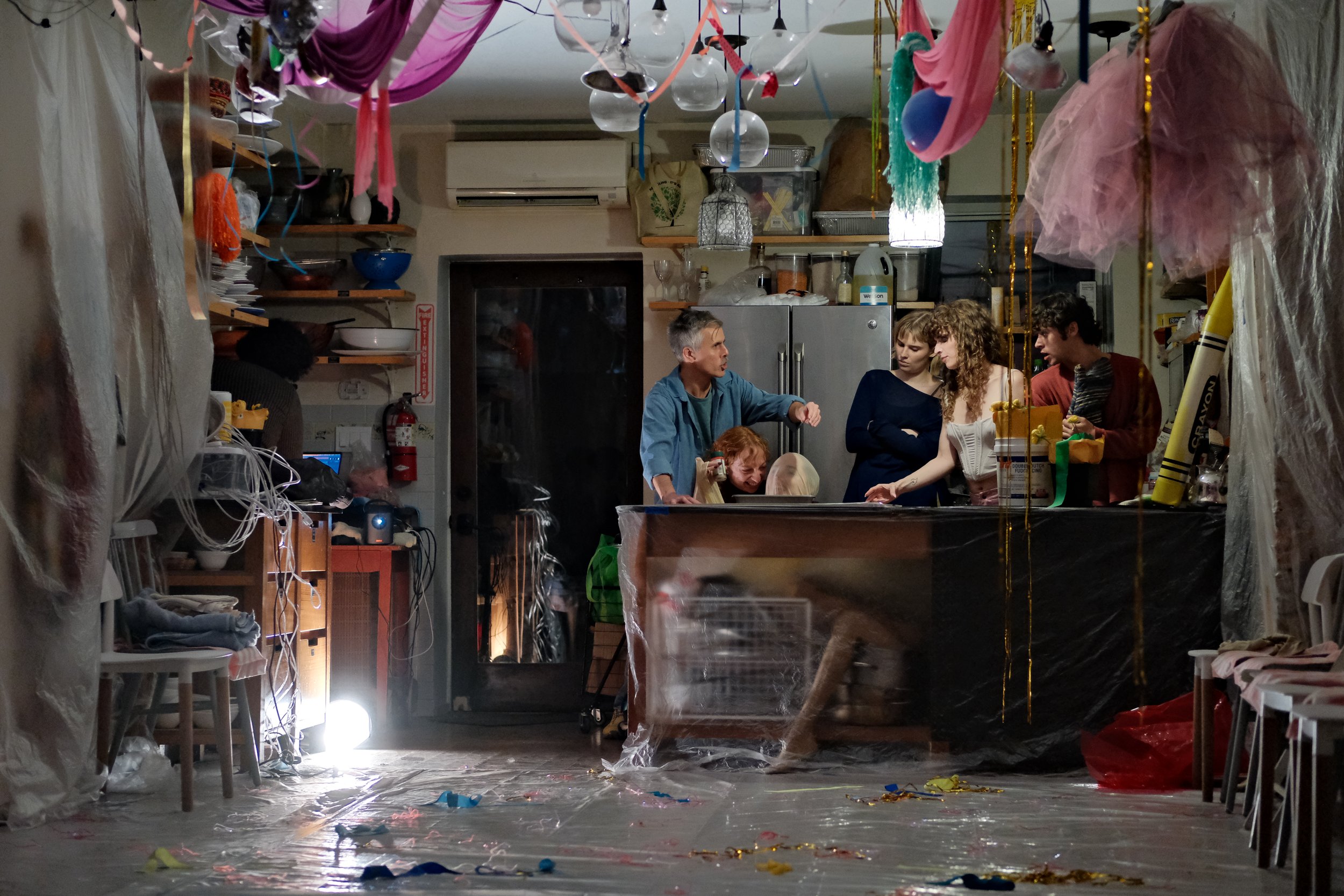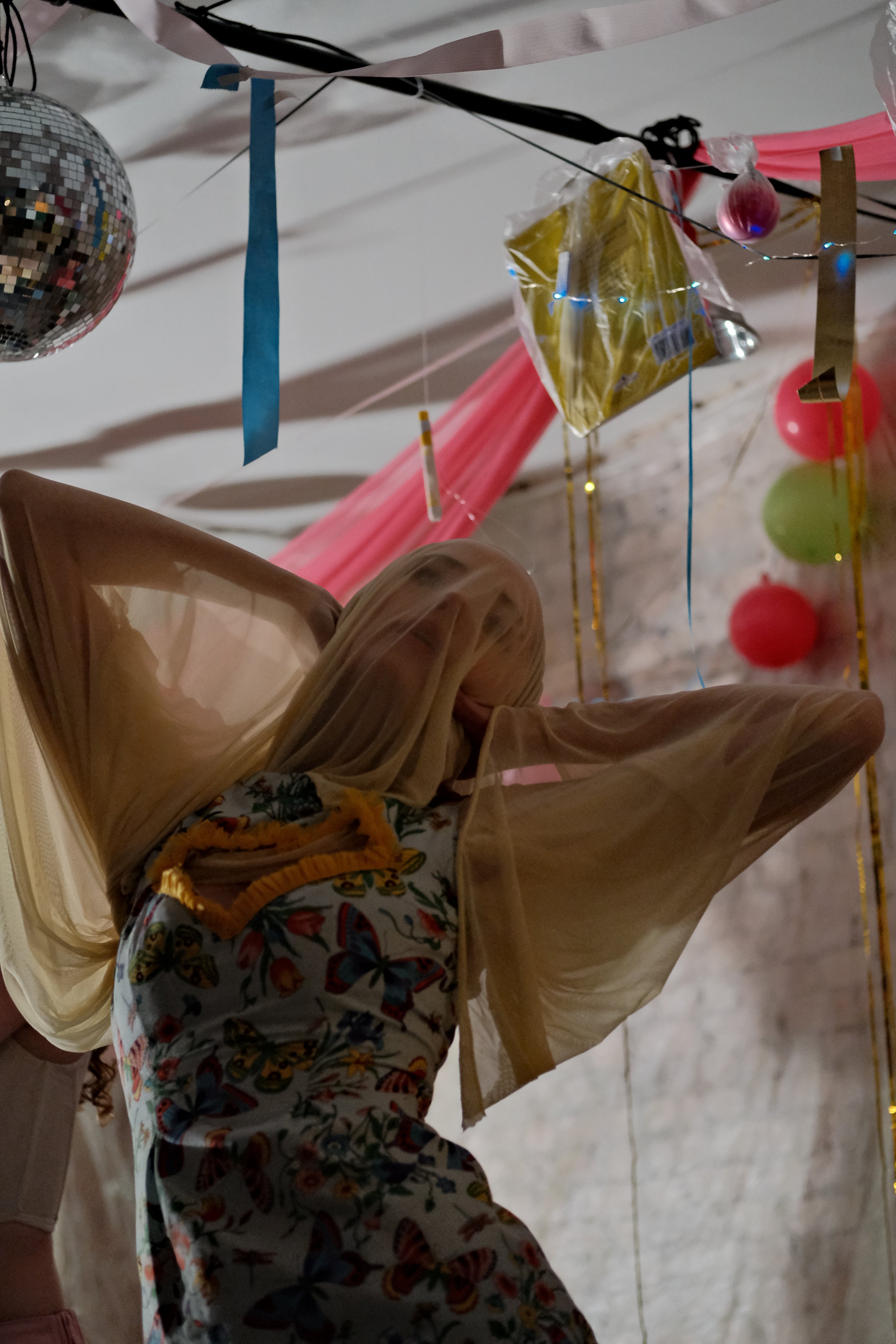Audio for Theatre
How does one represent their theatre sound design expertise on a webpage? This is a question that’s hard to answer. Frankly, I don’t think there’s a “correct” answer out there. The magic and allure of theatre is the equivalent of an inside joke that “you just had to be there” for.
The sounds I create are heavily influenced by the environment in which they’ll inhabit. The way something will sound depends on its context: of character, movement, the world of the play. It’s dependent on the physical space the production will be presented — a sound that worked in the rehearsal room may not work in the performance space. Things fall apart and need to be rebuilt or re-contextualized. Sound, alongside lighting (shout-out Emily Poole), are living, breathing elements of a show. They grow and develop as a production moves forward. I could just embed some sound files and call it a day, but I’m not going to do that. Well not just that, anyway; I’d prefer to run you through my process and reasoning.
I’ll be going through my design of Take Me to Dollywood, a production I had the pleasure of working on, written, and co-directed by Harris Singer, and produced by The Fool Volk. I chose to write about this production because of its experimental and avant-garde nature, which enabled me to create and iterate on different sounds and gave me plenty of opportunity to work closely with the writer and directors.
Starting Out
Take Me to Dollywood is an episodic play focused on LGBTQ+ relationships and struggles, all strung together by the ever-present, yet distant mother figure, Dolly Parton. In our early design meetings, I paid close attention to the discussion between each department. I often see sound as a glue that can hold everything together. The scenic designer could absolutely kill it (which he did, shout-out Sean Lillis, amazing!), but if my sound design doesn’t match the atmosphere it could cancel it out and cause confusion for the audience.
The major themes I understood to be most vital were:
Dreamy Liminal Spaces
Distant Childhood Memories // How you imagined adult life as a child
Nostalgia
A move from the rural south to New York City
Internalized homophobia // Fear of vulnerability
This being a passion project of Harris Singer, his personal experiences were deeply woven into the writing. This kind of raw passion is what inspires me in this industry. His experience of growing up in Georgia and taking the leap to New York City, his experience as a gay man, and of course, his love for and connection to Dolly Parton. Being from the NYC area and not the deep south, I had to do a bit of research into these areas in order to immerse myself in the setting.
Samples
Initial Research
My research began with speaking to a few friends from the south about their upbringing. I wanted to better understand how I could portray that feeling with sound. The small town feel the show portrays needs to blend close community and homophobia in order to set the scene for the sexual revolution inspired by moving to a bigger and more open-minded city. In sound, this could translate to a sort of distant, twisted nostalgia.
In the next phase, I spoke to our scenic designer about his plans. He was planning on leaning into a dreamy liminal space, scattered with memorabilia. I went on a deep dive looking into liminal spaces: pictures, subreddits, dream journals, and even video games.
I pulled from the video game The Complex, the subreddit r/LiminalSpace, and The Caretaker’s album Everywhere at the End of Time, a haunting album meant to represent the descent into dementia. These sources heavily influenced the dreamy tone of my work in this piece.
Tone Setting
I began with some short, simple sounds as an experiment. I wanted to be sure these would hit the mark in rehearsals. For this project, it was important to me that the cues within the scene set the tone for transitions between vignettes. This allows for a more cohesive feel tying, together the multitude of experiences being portrayed onstage without erasing or diluting anyone’s story.
The show’s overall genre falls into comedy, mixed with a bit of darkness. I tried to create sounds that straddle the line between the two. For example, there are a few scenes with a recurring character, Charles, who is on a journey of self discovery in his office. While this scene is heavily focused on the comedy, I wanted to be sure to highlight the anxiety and unease of his journey. I achieved this by keeping the action cues in the foreground. On the lower layer, I maintained the atmospheric drone of an office mixed with the subtle undertones of a cave beneath the surface. I used a reverb tone washed over everything that made the room feel large and empty which helped to keep the balance.
I also wrote a short song for Charles to cover his scenes. The short song is upbeat and cheery on its own but that reverb introduces a different tone, one of distance and loneliness. This, compounded with the other bits of ambience, helped to present the unease and dread of loneliness for the scene. I used this model of design for most other scenes.
Samples
Differing Tones
While much of the piece is comedic, there was one scene that was meant to give a sense of anxiety and foreboding. A character longs for a tender connection but fears the vulnerability brought on by years of internalized homophobia. Being from a small town, the fear of being “outed” gives the character immense anxiety. These feelings were mimicked with rain, knocking, rumbling, etc. Here are a few samples.
Space Evaluation
When visiting the space, I really only had two concerns: room size and acoustics. This space didn’t have its own PA system so I had to get creative and bring my own. Being a non-traditional space, I would have to get creative with speaker placement. This wasn’t a problem for me, as I have a background in acoustic engineering. The scenic designer and I reached a compromise and placed the system in the back middle of the room, being sure we got optimal spread of sound levels. While this kept the PA mostly hidden from the audience, it was tucked into a small corner which allowed a large low frequency buildup. I had to compensate for this by providing bass traps placed behind the PA and as well as some EQ work on the mixer. I walked around the space, cuing sounds and adjusting EQ settings on certain cues for optimal listening experience in all points of the space.
Final Steps
The final step was to complete and organize my QLab session. I wanted it to be clear and simple so there would be no confusion during performances. Setting up a comprehensive cue sheet and an easy to understand, mostly automated QLab session is key to a smooth run. Had I had more time, I would have hidden more cues within groups to visually simplify the session.
Gallery





Conclusion
All of the sound elements were finalized and created a cohesive atmosphere with appropriate transitions throughout the performance. Sound is a living, breathing piece of a play. It will guide the audience’s emotions, helping them to feel and empathize with the scene they’re watching. Watching the audience from the sound booth react to the sounds My goal was to glue this production together, and I feel I succeeded in that.
